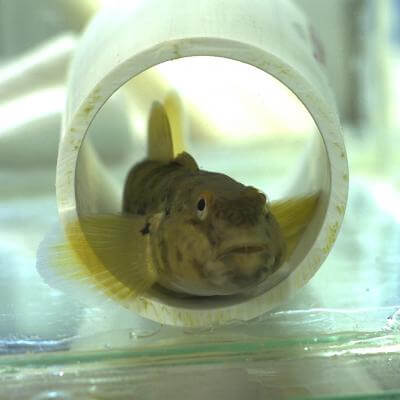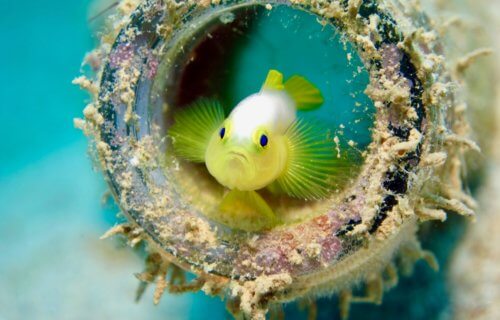CHICAGO — Research has shown that the human hand may have evolved from fish fins millions of years ago. A new study on goby may support this theory. Scientists say goby fins have the same ability as human fingers to detect objects just by using touch.
The cunning ability to determine differences between surfaces and shapes show these fishes have the same sense as many primates.

Graduate student Adam Hardy, from the University of Chicago, caught the fish in Lake Michigan for the research. The bottom-dwelling fish was chosen for the study as it often perches on rocks and other materials. He filmed the gobies as they maneuvered over a piece of slate or a wavy piece of plastic on the tank bottom, and the fins contacted the structures and the nerve signals were recorded.
Hardy gently brushed a short horizontal bar moving along a fin ray toward the tip at various speeds. Recording the electrical signals in nerves as the bar moved over the fin, Hardy says it was clear the fins sensed when they were being touched.
Hardy also designed a rotating wheel with 2 millimeter-wide ridges along the edge. The wheel was separated by gaps of 3, 5 and 7 millimeters to mimic sediments ranging from coarse sand to granules and pebbles. This process could determine whether the fins were sensitive enough to detect different grades of gravel.
“It took numerous design iterations to create the wheels,” Hardy explains in a media release. “They matched the pattern of the ridges moving across the skin even as the speed of the wheel increased.”
Most impressively, the gobies’ fins seemed to be as sensitive to the coarse surfaces as monkey finger pads.
“Primates are often held up as the gold standard in tactile sensitivity, so it was really exciting to see that fish fins exhibit a similar tactile response,” says Hardy. “This primate hand-like touch also suggests that the ability to detect surface differences via touch has been around a lot longer than we previously thought.”
The discovery is published in Journal of Experimental Biology.
SWNS reporter Joe Morgan contributed to this report.
